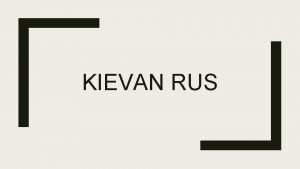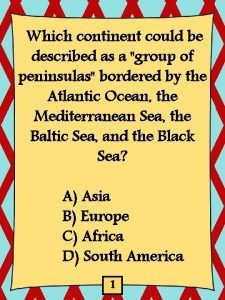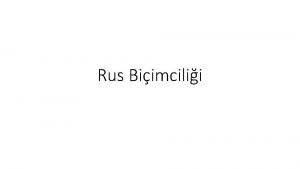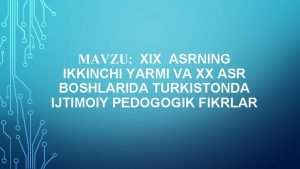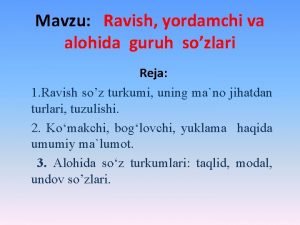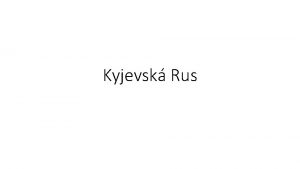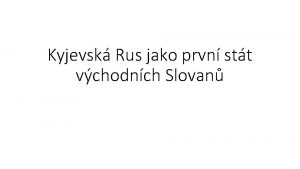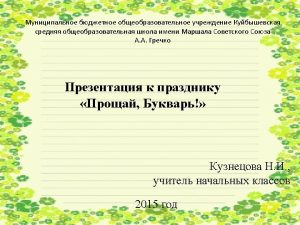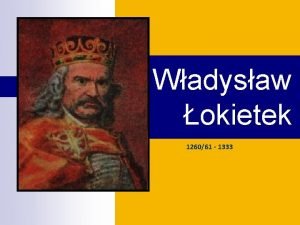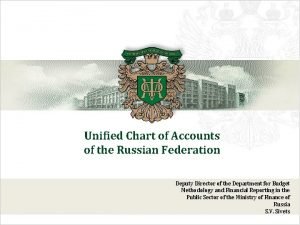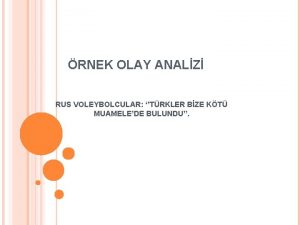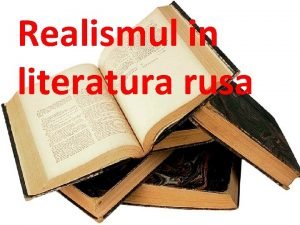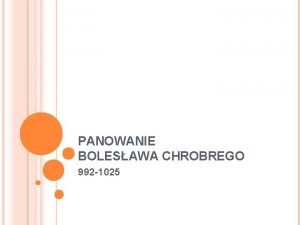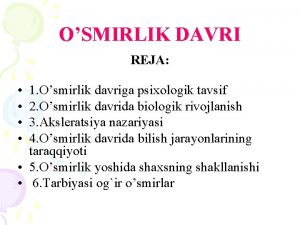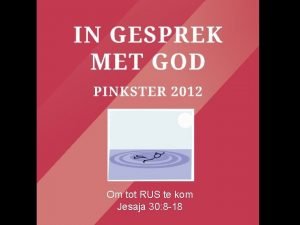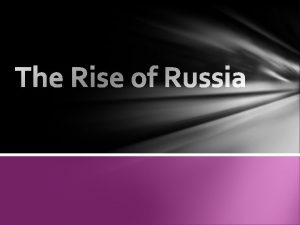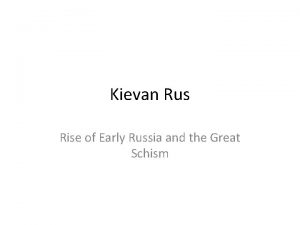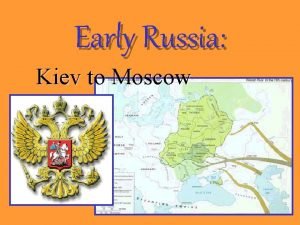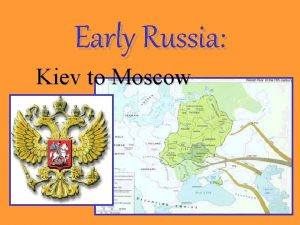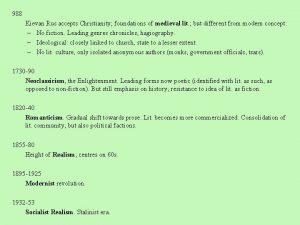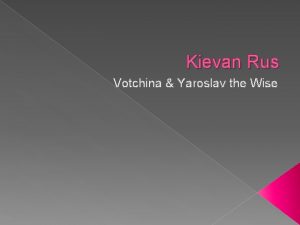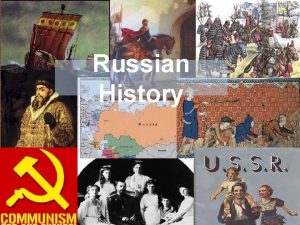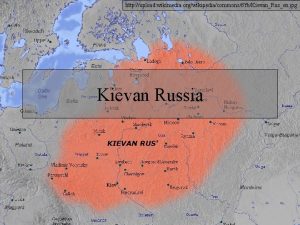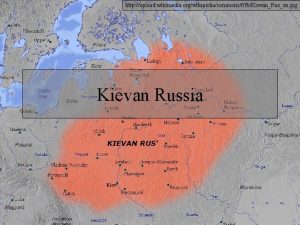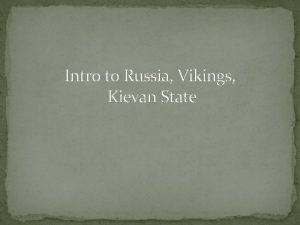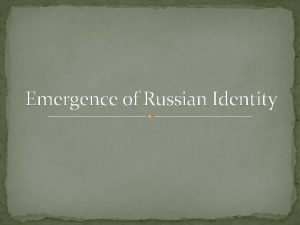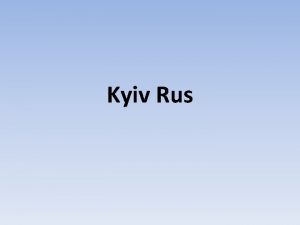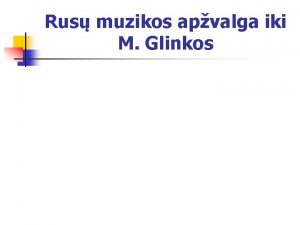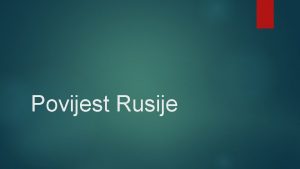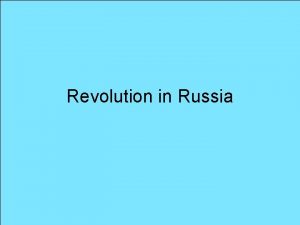EARLY RUSSIA AND THE KIEVAN RUS 800 s




















- Slides: 20

EARLY RUSSIA AND THE KIEVAN RUS 800 s to 1100 s CE

Spread of Eastern European Civilization n 864 -- Cyril and Methodius Byzantine missionaries n Successful in Russia and the Balkans n Used Slavic Created Cyrillic alphabet n n Eastern Orthodox religion-Eastern Europe and Russia Jews immigrated to the region

Cyril and Methodius


THE KIEVAN RUS n n Heavily influenced by Byzantium Area was populated by Slavs 6 th and 7 th centuries – Scandinavian traders appeared-Set up governments along their trade routes-Kiev 855 -- Monarchy was established under Rurik


BYZANTIUM AND THE RUS n n n Contacts between the two kingdoms increased steadily Kiev became a prosperous trading center Around 1000 – Vladimir I converted to Eastern Orthodox Christianity Forced his subjects to convert n Controlled major church appointments n Separate Russian Orthodox church developed n

Kiev

CHARACTERISTICS OF KIEVAN RUS n Largest single state in Europe n n Highly decentralized Yaroslav – Last of the great Kievan princes Codified laws n Built many churches n Translated religious literature from Greek to Slavic n


INSTITUTIONS AND CULTURE n Byzantine influence Ceremonies, luxuries, and absolute power of the leader n Fervent devotion to God n Ornate churches filled with icons n Monogamy n n Literature n n Focused on religious and royal events No significant philosophical or scientific contributions

Icons


n n n Art- Focused on religion Architecture- Orthodox churches Society Peasants were fairly free farmers n Boyars – Russian aristocratic class n n Entertainment Low literacy- story telling n Combined music, street performances, and theater n


KIEVAN DECLINE – 12 TH CENTURY n Causes: Rival princes set up regional governments n Fighting within the royal family over succession n Asian invaders whittled away Russian territory n Decline of Byzantium decreased Russian trade and wealth n Two Mongol invasions (Mongols are called Tartars by the Russians) n

MONGOL CONTROL OF RUSSIA n n Lasted for over two centuries Consequences: Further separated Russia from western Europe n Russian literature languished n Trade lapsed n Russia was isolated n


n Russian Orthodox Christianity and the boyars were spared n n Tribute 15 th century – Tartars were forced out Russian culture and politics began to reemerge n Mantle of east European leadership fell to Russia because of the fall of Byzantium n

END OF AN ERA IN EASTERN EUROPE n n Byzantium and Russia were under siege Eastern Europe fell on hard times n They had been ahead of western Europe during Byzantine domination, but fell behind western Europe after the fall of Byzantium
 Kievan rus geography
Kievan rus geography Which letter represents the pyrenees mountains on the map?
Which letter represents the pyrenees mountains on the map? 200 + 200 = 400
200 + 200 = 400 Early cpr and early defibrillation can: *
Early cpr and early defibrillation can: * Rus biçimciliği
Rus biçimciliği Xix asrning 2 yarmida turkistonda maktablar tizimi
Xix asrning 2 yarmida turkistonda maktablar tizimi Holat ravishlariga misollar
Holat ravishlariga misollar Primo gruppo della terza declinazione
Primo gruppo della terza declinazione Kyjevská rus
Kyjevská rus Kyjevska rus mapa
Kyjevska rus mapa Tens endikasyonları
Tens endikasyonları Ulrik fredrik malt
Ulrik fredrik malt Russkiy alfavit
Russkiy alfavit Utrata pomorza gdańskiego
Utrata pomorza gdańskiego Unified chart of accounts
Unified chart of accounts Rus voleybolcular
Rus voleybolcular Realism definitie
Realism definitie Ruś kijowska
Ruś kijowska O'smirlik davri
O'smirlik davri Enstase
Enstase Endringshjulet rus
Endringshjulet rus
